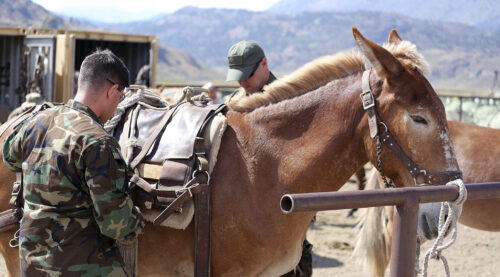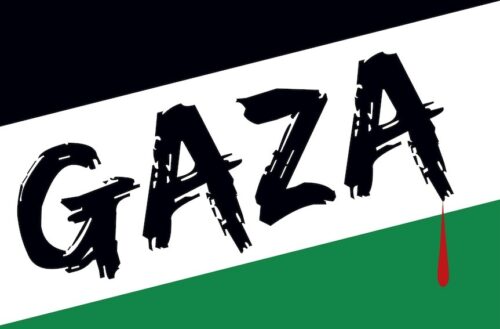Numerous reports are coming in regarding a sharp increase in ceasefire violations along the contact line in Donbass. The civilian infrastructure regularly becomes the epicenter of violations. Since the decision to strengthen the ceasefire was taken on July 22, 2020, the OSCE SMM still registers violations amounting to 4 digit numbers.
Ceasefire violations
Numerous reports are arriving on a sharp increase in the ceasefire violations along the contact line. These reports are confirmed by the OSCE SMM, which stated in their report from November 7, 2020, “following the agreement reached at the meeting of the Trilateral Contact Group on 22 July regarding additional measures to strengthen the ceasefire, from 00:01 on 27 July until the end of the reporting period, the SMM has so far recorded a total of 2,106 ceasefire violations in both the Donetsk and Luhansk regions (including 730 explosions, 45 projectiles in flight, 16 muzzle flashes, 23 illumination flares and 1,292 bursts and shots)”.
According to their observations, most of the ceasefire violations occurred in the Donetsk region. According to the OSCE SMM reports, the civilian infrastructure has regularly been the epicenter of violations. One is Donetsk Filtration Station in the non-government-controlled area. It supplies more than 600 thousand people who live on both sides of the contact line. The personnel of the station are mainly people living in Donetsk and Yasinuvata.
A summary of the OSCE SMM reports issued in the first week of November includes:
November 7 – 55 violations, all in Donetsk region, including 48 undetermined explosions, the majority in the areas north-north-east of Shyrokyne (government-controlled, 100km south of Donetsk) and in areas south-south-west of the Donetsk Filtration Station (DFS)
November 6 – 52 violations, all in the Donetsk region. This report by the SMM also confirmed news items received via local sources that the convoy of workers of the Donetsk Filtration Station had come under fire. The reports states, “During the day on 5 November, while positioned about 1km north-west of Yasynuvata (non-government-controlled, 16km north-east of Donetsk), it recorded ten ceasefire violations, assessed within a five km radius of the station, three of which occurred while the DFS workers convoy was driving towards Yasynuvata on road M-04”.
November 5 – Three ceasefire violations reported in the Donetsk region and one in the Luhansk region. In the Donetsk, all ceasefire violations recorded occurred in the areas south-west of the Donetsk Filtration Station (DFS) (15km north of Donetsk).
November 4 – 27 ceasefire violations recorded in the Donetsk region and seven in the Luhansk region. Out of 27 violations recorded in the Donetsk, 24 explosions occurred in the areas south of the Donetsk Filtration Station.
November 3 – Seven ceasefire violations in the Donetsk region and none in the Luhansk region. All bursts of heavy machine-gun fire in areas south of the Donetsk Filtration Station (DFS). In the previous 24 hours, SMM did not record any ceasefire violations in either region.
November 2 – Between the evenings of 30 October and 1 November, the SMM recorded nine ceasefire violations in the Donetsk region, including an undetermined explosion, almost all of which in areas south-west of the Donetsk Filtration Station (DFS).
Besides SMM, local civilian contacts living in the area note that there have been occasional violations in other settlements. Thus, “Tatyana”, a local resident of the village of Yasnoye (non-government-controlled part of the Donetsk region), stated that the village was under fire on Sunday, November 8. According to her statement, it was the first case of the ceasefire violation in the area since July 22.
COVID-19 and the situation at the crossing points along the contact line
Two new crossing points have been added in the Luhansk region, near the Schastia and Zolote settlements. The decision to establish additional checkpoints was made on 22 July 2020 at a meeting of the Trilateral Contact Group. Until now there was only one checkpoint in the Luhansk Oblast in Stanytsia Luhanska.
However, the situation with people’s passage remains complicated due to lack of coordination. Thus, the only operating checkpoint in the Luhansk region was declared to be under a two-week lockdown until November 15. The decision was taken by the Uktrainian side because of the increase in the number of Covid cases. However, on 9 November the Ukrainian side suddenly announced that all seven crossing points would be simultaneously open from December 10.
This all is in accordance with the proposal by Ukraine’s Healthcare Minister Maksim Stepanov to drop the adaptive quarantine in the country and impose a total lockdown in the country. Neither Donetsk nor Lugansk are opening crossing points from their side. Olga Kobtseva, a representative of Lugansk, stated that neither Schastia nor Zolote will be operating. Donetsk states that only the Olenivka crossing point will be kept open twice a week.
“The situation at the entry-exit point,” according to Telegram-channel (more than 25000 subscribers), provides a way to analyze local people’s sentiments. The comments people make there provide for a broad range of views. However, what is common among hundreds of comments is the disagreement on the way checkpoints operate and creates extremely bitter feelings in people. People express anger and frustration with all sides of the conflict.
The Finnish Peace Committee has received several reports on the situation with pensioners in the non-government-controlled parts of Ukraine.
- A representative of a family with disabled members and an elderly mother living in the government-controlled part of Donetsk region: “Only a limited number of pensioners can afford a trip to Ukraine via Russia. The market for transporting people is cynical. I managed to visit my elderly mother once and update bank cards by handing them over via passengers on buses. It is twice as cheap but takes enormous physical effort plus additional emotional pressure. It is not advisable to do this for those who are weak, disabled or have ‘weak nerves’… My family members have not been receiving Ukrainian pensions for four months and I am not going to even try taking them there. They are too weak. Besides, to cover the costs of such a trip will take all the money we have saved. Still, it is such a relief that there is some corridor for people to move out. But to get back from Ukraine to Russia and then to our part of the region, it is necessary to have a Ukrainian travel document. To get it, it is necessary to fight your way through to the migration office to have a passport issued. The lockdown situation has become good soil for corruption and profiteering at the expense of the unfortunate pensioners…”
- Three testimonies from civilians, all from the part controlled by Donetsk:
“It depends. Nobody knows on what. The mess started when the lockdown in spring was introduced. My mother still receives her pension. But to organise it, she had to travel from Donetsk to Kiev. The only way to do it is via Russia.”
”Those who are not capable of rearranging their cards, stopped receiving pensions. Still, nobody understands how it works. Some people who have expired Oschadbank bankcards still receive money to them. Some with valid cards have their transactions frozen.”
”Some still get, some don’t. It is a mess. There are two types of pensioners, those with electronic pension cards. They still get but some had their cards frozen and they had to travel to Kiev to unblock them. The other type are holders of ordinary paper pension certificates with normal Oschadbank cards. The same problem: although these cards are now automatically extended (their validity), some were receiving pensions to the cards which were not valid while others stopped receiving pensions to still valid cards. Nevertheless, the cards have been extended until the end of the year. There are also people who see money coming to the card but for some reason can’t withdraw it.”
In all cases people stated that in addition to the problems of having money transferred, they have to find ways how to cash their pensions. There is no official way to do this, only via cash traders operating in the gray market. The rate is unstable but always advantageous to a trader. Besides, traders charge from 5-10% .







